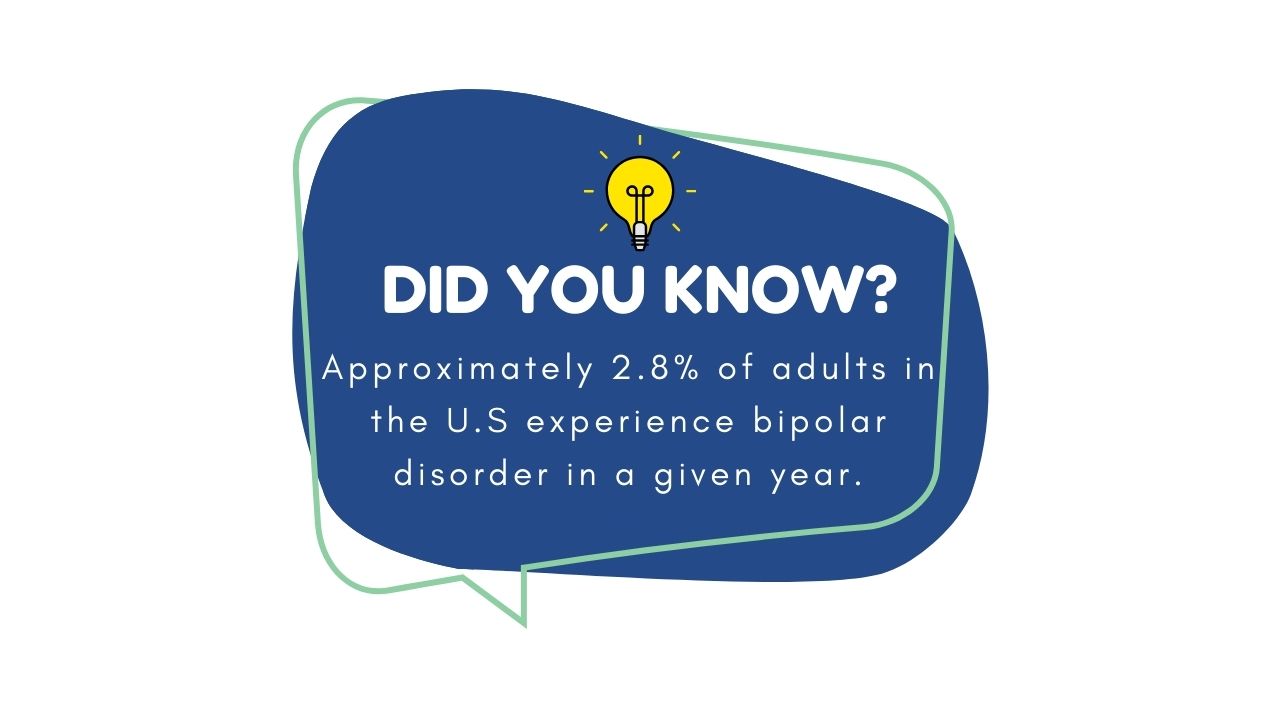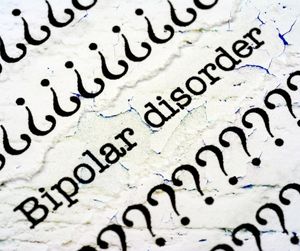Can Bipolar Be Cured: Understanding Treatment Options and Long-Term Management Strategies
Bipolar disorder affects millions worldwide, causing dramatic shifts in mood, energy, and activity levels that interfere with daily life. Many people diagnosed with this condition wonder if they’ll ever be completely free from its symptoms. While bipolar disorder cannot be cured in the traditional sense, it can be effectively managed with proper treatment, allowing many people to lead stable, fulfilling lives.
At Waterside Behavioral Health, we provide comprehensive mental health treatment programs, including our intensive outpatient program for mental health in Massachusetts and our partial hospitalization program for mental health in Massachusetts.
Treatment typically involves a combination of medication, therapy, lifestyle changes, and support systems. These approaches help control symptoms and prevent severe mood episodes. Some individuals achieve long periods of stability that might feel like a cure, though the underlying condition remains.
Key Takeaways
- Bipolar disorder is a lifelong condition that can be managed but not completely cured with current medical knowledge.
- Effective treatment plans typically combine medications, therapy, and lifestyle strategies tailored to individual needs.
- Many people with bipolar disorder achieve long-term stability and live productive lives when following comprehensive treatment approaches.
Understanding Bipolar Disorder
Bipolar disorder is a complex mental health condition that affects how people think, feel, and behave. It involves significant mood shifts that go beyond typical ups and downs experienced in everyday life.
Defining Bipolar Disorder
Bipolar disorder is a chronic mental health condition characterized by extreme mood swings that include emotional highs (mania or hypomania) and lows (depression). Previously called manic depression, this condition affects approximately 2.8% of adults in the United States.
Unlike regular mood fluctuations, bipolar disorder episodes can last for days, weeks, or even months. These mood changes are more severe than normal emotional responses and can significantly impact daily functioning.
Bipolar disorder has several types. Bipolar I involves manic episodes lasting at least 7 days or severe mania requiring hospitalization, usually with depressive episodes. Bipolar II features less severe hypomanic episodes alternating with depression.
Cyclothymic disorder involves numerous periods of hypomanic and depressive symptoms lasting at least 2 years, but less severe than full bipolar disorder.
Symptoms and Diagnosis
The diagnosis of bipolar disorder requires careful assessment by mental health professionals. Key symptoms vary between manic and depressive episodes.
Manic symptoms include:
- Abnormally elevated mood or irritability
- Decreased need for sleep
- Racing thoughts and rapid speech
- Increased energy and activity
- Poor judgment and risky behavior
Depressive symptoms include:
- Persistent sadness or emptiness
- Loss of interest in activities
- Changes in appetite and sleep patterns
- Fatigue and low energy
- Thoughts of death or suicide
Diagnosing bipolar disorder typically involves a comprehensive evaluation. This includes a detailed personal history, family history of mental illness, and assessment using diagnostic criteria from the DSM-5 (Diagnostic and Statistical Manual of Mental Disorders).
Misdiagnosis is common, as symptoms may overlap with other conditions like depression, anxiety disorders, or ADHD. Many people experience symptoms for years before receiving an accurate diagnosis.

Treatment Options
Bipolar disorder requires a comprehensive treatment approach that combines several strategies to manage symptoms effectively and improve quality of life. Most patients benefit from a combination of medication, therapy, and lifestyle changes tailored to their specific needs.
Medication Management
Mood stabilizers are the foundation of bipolar treatment. Lithium, the oldest and most studied option, helps prevent both manic and depressive episodes. Many patients show good response rates with proper monitoring.
Anticonvulsants like valproate, lamotrigine, and carbamazepine can also help stabilize mood. These medications are particularly useful when lithium isn’t effective.
Atypical antipsychotics may be prescribed for acute manic episodes or as maintenance treatment. Medications like quetiapine and olanzapine can help control symptoms quickly.
Antidepressants are sometimes used cautiously for bipolar depression, but always with a mood stabilizer to prevent triggering mania.
Regular blood tests and check-ups are essential to monitor medication levels and side effects. Finding the right medication combination often takes time and patience.
Psychotherapy
Cognitive-behavioral therapy (CBT) helps patients identify negative thought patterns and develop coping strategies. Research shows CBT can reduce relapse rates and improve medication adherence.
Interpersonal and social rhythm therapy focuses on stabilizing daily routines and improving relationships. This approach recognizes that disrupted schedules can trigger episodes.
Family-focused therapy educates loved ones about bipolar disorder and improves communication. When families understand the condition better, they provide more effective support.
Group therapy offers valuable peer support from others facing similar challenges. Sharing experiences in a structured environment reduces isolation.
Psychoeducation teaches patients about their condition, helping them recognize early warning signs of episodes. This knowledge empowers individuals to seek help promptly.
Lifestyle Adjustments
Regular sleep patterns are crucial for mood stability. Going to bed and waking up at consistent times helps regulate circadian rhythms that affect mood.
Stress management techniques such as meditation, deep breathing, and yoga can prevent stress-triggered episodes. Even 10-15 minutes of daily practice shows benefits.
Exercise has proven mood-stabilizing effects. Studies show that 30 minutes of moderate activity several times weekly can reduce symptoms of both depression and mania.
Avoiding alcohol and recreational drugs is essential, as these substances can trigger episodes and reduce medication effectiveness.
Maintaining a regular daily routine helps stabilize mood. Consistent meal times, work schedules, and social activities provide structure that supports stability.
Challenges in Achieving Remission
People with bipolar disorder face several hurdles on their journey toward symptom control. The complex nature of this condition and difficulties with treatment adherence often create roadblocks to recovery.
Complexity of Symptoms
Bipolar disorder presents with varying symptoms that can be difficult to identify and track. Many patients experience mixed episodes where both manic and depressive symptoms occur simultaneously, complicating diagnosis and treatment.
The cyclical nature of bipolar disorder means symptoms often change over time. What works during one phase might be ineffective during another. This unpredictability makes consistent management challenging.
Common symptom complexities include:
- Rapid cycling (four or more mood episodes per year)
- Subtle hypomanic episodes that go unrecognized
- Overlapping symptoms with other conditions
- Different symptom patterns between individuals
Environmental triggers like stress, sleep disruption, and seasonal changes can worsen symptoms unexpectedly. This variability requires constant monitoring and adjustment of treatment approaches.
Adherence to Treatment
Many people with bipolar disorder struggle to follow their prescribed treatment plans. During manic episodes, patients may feel invincible and stop taking medications. They might miss the elevated mood and energy that mania brings.
Side effects from medications represent another significant barrier. Weight gain, cognitive dulling, and fatigue are common complaints that lead to treatment discontinuation.
Factors affecting medication adherence:
- Unwanted side effects
- Cost of medications and therapy
- Difficulty accepting the diagnosis
- Complex medication schedules
- Lack of support systems
The long-term nature of bipolar treatment can lead to “treatment fatigue.” Patients may grow frustrated with the ongoing need for medications and therapy. Regular appointments and medication adjustments require sustained commitment that can be difficult to maintain over years or decades.
Current Research
Scientists are actively exploring new approaches to manage bipolar disorder more effectively. Research focuses on improving medications and therapy methods to help patients achieve better stability and quality of life.
Advances in Pharmacotherapy
Researchers are developing new medications that target specific brain pathways involved in mood regulation. These include glutamate modulators like ketamine derivatives, which show promise for treating bipolar depression with faster action than traditional medications.
Gene testing is becoming more important in bipolar treatment. Tests can help predict which medications might work best for individual patients and which might cause side effects. This approach, called pharmacogenomics, may reduce the trial-and-error process many patients experience.
Novel drug delivery systems are also being studied. These include long-acting injectable medications that maintain steady levels in the bloodstream. Such systems might improve adherence and provide more consistent symptom control.
Innovations in Psychotherapy
Digital health interventions are transforming bipolar treatment. Smartphone apps that track mood patterns, sleep, and medication adherence give patients and clinicians valuable data. Studies show these tools can help identify early warning signs of mood episodes.
Researchers are refining specific therapy approaches for bipolar disorder. Interpersonal and social rhythm therapy (IPSRT) helps patients maintain regular daily routines, which can stabilize mood cycles. Evidence suggests this approach reduces relapse rates when combined with medication.
Mindfulness-based cognitive therapy (MBCT) is showing promise for bipolar disorder. This approach combines meditation practices with cognitive strategies to help patients recognize and manage thought patterns that might trigger mood episodes.
Living with Bipolar Disorder
Daily life with bipolar disorder involves building support systems and developing practical strategies for long-term wellness. Effective management combines medical treatment with lifestyle approaches tailored to individual needs.
Support Networks
Creating a strong support network is crucial for people with bipolar disorder. This network often includes mental health professionals, family members, friends, and support groups.
Mental health professionals provide clinical guidance and medication management. A good therapist or psychiatrist can offer valuable insights about symptoms and treatment options.
Family and friends play a key role in recognizing early warning signs of mood episodes. When loved ones understand bipolar disorder, they can provide emotional support without judgment.
Support groups connect people with similar experiences. These groups reduce feelings of isolation and offer practical advice from others who understand the challenges firsthand. Many groups meet in person, while online communities provide support 24/7.
Long-Term Management Strategies
Consistent medication adherence forms the foundation of bipolar management. Taking prescribed medications as directed helps stabilize mood and prevent relapses.
Regular sleep patterns significantly impact mood stability. People with bipolar disorder benefit from going to bed and waking up at consistent times, even on weekends.
Stress reduction techniques are essential tools:
- Mindfulness meditation
- Deep breathing exercises
- Progressive muscle relaxation
- Regular physical activity
Mood tracking helps identify patterns and triggers. Many people use journals or smartphone apps to record daily moods, sleep, medication, and activities.
Setting realistic goals prevents overwhelming pressure. Breaking large tasks into smaller steps makes challenges more manageable and reduces stress.
Frequently Asked Questions
Many people have important questions about bipolar disorder treatment, causes, and life outcomes. Here are answers to some common questions based on current medical understanding.
What is the most effective treatment for managing bipolar disorder?
Medication is the foundation of effective bipolar disorder treatment. Mood stabilizers like lithium, anticonvulsants, and atypical antipsychotics help regulate mood fluctuations and prevent episodes.
Psychotherapy works alongside medication to improve outcomes. Cognitive-behavioral therapy (CBT), interpersonal therapy, and family-focused therapy help patients develop coping strategies and recognize early warning signs.
The most effective approach combines medication, therapy, lifestyle management, and social support. Regular sleep patterns, stress reduction, and avoiding substances that trigger episodes are essential parts of treatment.
What are the genetic factors associated with bipolar disorder?
Bipolar disorder has a strong genetic component. First-degree relatives of someone with bipolar disorder have a 5-10 times higher risk of developing the condition compared to the general population.
Scientists have identified several genes that may contribute to bipolar vulnerability. These genes affect brain development, neurotransmitter systems, and stress response mechanisms.
The genetic basis appears to involve multiple genes rather than a single gene. Environmental factors interact with genetic predisposition to determine whether someone develops the disorder.
Can a person with bipolar disorder live a normal and fulfilling life?
Many people with bipolar disorder lead successful, fulfilling lives. With proper treatment and management, symptoms can be controlled effectively for most individuals.
Famous artists, entrepreneurs, politicians, and professionals across various fields have bipolar disorder and have achieved significant success. Treatment advances have greatly improved outcomes compared to previous generations.
The key to a fulfilling life involves medication adherence, therapy participation, strong support systems, and healthy lifestyle choices. Early intervention and consistent treatment significantly improve long-term outcomes.
What are the primary causes of bipolar disorder in the brain?
Bipolar disorder involves imbalances in brain chemicals called neurotransmitters. Serotonin, dopamine, and norepinephrine levels fluctuate abnormally during manic and depressive episodes.
Brain imaging studies show structural and functional differences in certain brain regions. The amygdala, prefrontal cortex, and hippocampus often show altered activity patterns in people with bipolar disorder.
Dysregulation of circadian rhythms and the body’s stress response system also contribute to symptoms. These biological factors interact with genetic vulnerability and environmental triggers to cause the disorder.
How can bipolar disorder symptoms vary between males and females?
Women with bipolar disorder typically experience more depressive episodes than men. They also have higher rates of rapid cycling, where mood episodes occur four or more times per year.
Men often exhibit more manic symptoms and may experience their first episode at an earlier age. Their symptoms might be misdiagnosed as aggression or substance abuse rather than bipolar disorder.
Hormonal fluctuations can impact symptom patterns in women. Pregnancy, postpartum periods, and menopause may trigger episodes or changes in symptom severity.
Are individuals with bipolar disorder able to achieve lasting happiness?
People with bipolar disorder can experience genuine happiness and satisfaction. The goal of treatment is not to eliminate emotional responses but to achieve emotional stability.
Happiness for someone with bipolar disorder comes through the same channels as for anyone else—meaningful relationships, purposeful activities, and personal accomplishments. Treatment helps create the stability needed to pursue these experiences.
Many individuals report that managing their condition brings self-awareness that enhances their appreciation of life’s positive moments. With proper treatment, most people can experience a full range of appropriate emotions, including lasting contentment and joy.




